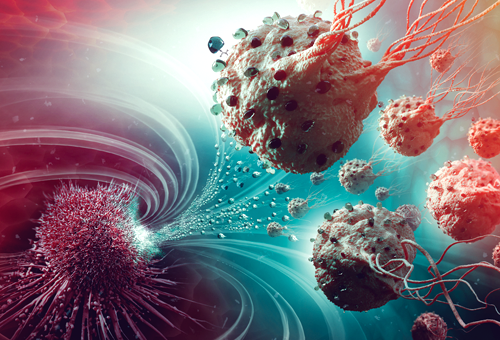Photodynamic Therapy (PDT)
When one think about laser beam treatments, Photodynamic Therapy (PDT) would normally come to mind. It uses light as a catalyst through a Photosensitizer that responds to the light. Let’s us explore a little more about this treatment and the benefits.
Many people would think that low intensity laser therapy might not be able to reach organs that are located deep in the body. However, the facts are as follow:
There are limitations in the use of laser that has the capability to treat the tissues that penetrates the skin. There might be a chance that the skin could burn during treatment.
Therefore, low intensity laser therapy could be the best option available as it is able to optimize treatment results through highly efficient amounts of exposure needed for each individual patient.
The organs or tissues respond to an increase of light makes it more efficient by using “Photosensitizer”. This technique is widely used in the treatment of cancer as it is able to destroy the cancer cells. This is because when the cancer cells are stimulated, the photoreceptor will react, which is the process that causes Apoptosis.

How it works
When the Photosensitizer is being use, the body will be exposure to the light. The cells becomes 2-3 times more sensitive when the exposure takes place. Currently, there are many photosensitizers that are being used. Some examples are as follow:
-
Chlorophyll will improve the function of red-light. When consumed orally, the chlorophyll will be present in the blood. When low level of red-light laser is used, it will improve the efficacy of the function of red light as chlorophyll is a catalyst.
Red-light laser can help alleviate pain or make the body more alert. Chlorophyll in the form of liquid can be consumed and the laser treatment can be done by using either the red light or laser watch.
-
Curcumin is a substance found in turmeric, which helps improve the function of blue light in terms of sterilization and the reduction of inflammation.

Therefore, taking curcumin in conjunction with blue light during treatment has the ability to improve the sterilization of the blood. This combination is highly effective in managing a cold or improving one’s immunity.
-
St. John’s Wort Extract can help improve the function of yellow light. When taking St. John’s Wort Extract in combination with low level yellow light laser, the efficacy of the treatment for cases like depression will increase.
-
For cancer treatments, deep laser transmission is commonly used. Red light and infrared are the sources of light energy that can perpetrate deeper than other lights.
Therefore, Choline-B 6, the light catalyst that is suitable with the function of red light and Indocyanine Green (ICG), the photosensitizer that is suitable with the function of infrared are better options for an optimal result.
The combination mentioned above is commonly used for diagnostic in conventional medicine. They are non-poisonous and cause no side-effects to the body. In turn, they are highly sensitive and has the ability to detect cancerous and mutated cells.
The tissues effected by tumor will be dyed by the substances mentioned. The laser treatment will then take place thereafter. During treatment, the cancer cell will be destroyed whereas the normal cells will not be affected. This technique is an effective, non-poisonous, non-harmful approach to treating cancer.





Sign In
Create New Account